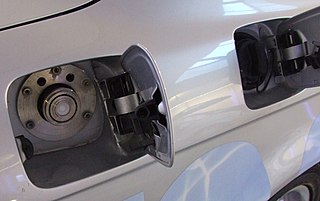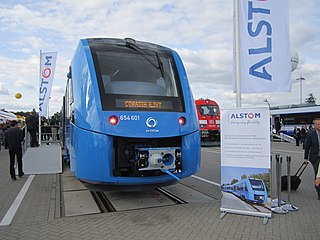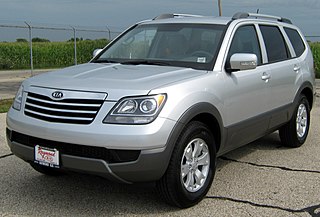 W
WA hydrogen internal combustion engine vehicle (HICEV) is a type of hydrogen vehicle using an internal combustion engine. Hydrogen internal combustion engine vehicles are different from hydrogen fuel cell vehicles. Instead, the hydrogen internal combustion engine is simply a modified version of the traditional gasoline-powered internal combustion engine. The absence of carbon means that no CO2 is produced, which eliminates the main greenhouse gas emission of a conventional petroleum engine.
 W
WA hydrogen vehicle is a type of alternative fuel vehicle that uses hydrogen fuel for motive power. Hydrogen vehicles include hydrogen-fueled space rockets, as well as automobiles and other transportation vehicles. Power is generated by converting the chemical energy of hydrogen to mechanical energy, either by reacting hydrogen with oxygen in a fuel cell to power electric motors or, less commonly, by burning hydrogen in an internal combustion engine.
 W
WThe Alstom Coradia LINT is an articulated railcar manufactured by Alstom since 1999, offered in diesel and hydrogen fuel models. The acronym LINT is short for the German "leichter innovativer Nahverkehrstriebwagen". It was designed by Linke-Hofmann-Busch and has been distributed as part of Alstom's Coradia family.
 W
WThe British Rail Class 600 Breeze is a proposed class of hydrogen fuel powered multiple unit to be built using the bodyshell of a Class 321 electric multiple unit.
 W
WThe Centaur is a family of rocket propelled upper stages currently produced by U.S. launch service provider United Launch Alliance, with one main active version and one version under development. The 3.05 m (10.0 ft) diameter Common Centaur/Centaur III (as referenced in the infobox) flies as the upper stage of the Atlas V launch vehicle, and the 5.4 m (18 ft) diameter Centaur V is being developed as the upper stage of ULA's new Vulcan rocket. Centaur was the first rocket stage to use liquid hydrogen (LH2) and liquid oxygen (LOX) propellants, a high-energy combination that is ideal for upper stages but has significant handling difficulties.
 W
WShuttle-Centaur was a version of the Centaur upper stage rocket designed to be carried aloft inside the Space Shuttle and used to launch satellites into high Earth orbits or probes into deep space. Two variants were developed: Centaur G-Prime, which was planned to launch the Galileo and Ulysses robotic probes to Jupiter, and Centaur G, a shortened version planned for use with United States Department of Defense Milstar satellites and the Magellan Venus probe. The powerful Centaur upper stage allowed for heavier deep space probes, and for them to reach Jupiter sooner, prolonging the operational life of the spacecraft. However, neither variant ever flew on a Shuttle. Support for the project came from the United States Air Force (USAF) and the National Reconnaissance Office, which asserted that its classified satellites required the power of Centaur. The USAF agreed to pay half the design and development costs of Centaur G, and the National Aeronautics and Space Administration (NASA) paid the other half.
 W
WBMW CleanEnergy vehicles have both a hydrogen and a petrol tank. If one of the tanks is empty, the bivalent BMW engine unit switches over automatically to the other fuel system. One decisive advantage of the combustion engine is bivalence. It enables both hydrogen and petrol to be used, thus creating the ideal conditions for a transition from non-regenerative to regenerative drive energies. During electrolysis water is split into its components of hydrogen and oxygen. The hydrogen is stored and the oxygen is needed in the vehicle for the combustion of the hydrogen. The combustion process generates energy and water as a waste product, which returns to the natural water cycle. And so with the aid of regenerative energy suppliers, a theoretically emission-free fuel is obtained.
 W
WA hydrogen vehicle is a type of alternative fuel vehicle that uses hydrogen fuel for motive power. Hydrogen vehicles include hydrogen-fueled space rockets, as well as automobiles and other transportation vehicles. Power is generated by converting the chemical energy of hydrogen to mechanical energy, either by reacting hydrogen with oxygen in a fuel cell to power electric motors or, less commonly, by burning hydrogen in an internal combustion engine.
 W
WHydrail is the generic adjective term describing all forms of rail vehicles, large or small, which use on-board hydrogen fuel as a source of energy to power the traction motors, or the auxiliaries, or both. Hydrail vehicles use the chemical energy of hydrogen for propulsion, either by burning hydrogen in a hydrogen internal combustion engine, or by reacting hydrogen with oxygen in a fuel cell to run electric motors. Widespread use of hydrogen for fueling rail transportation is a basic element of the proposed hydrogen economy. The term is used extensively by research scholars and technicians around the world.
 W
WHyzon Motors is a supplier of zero-emissions hydrogen fuel cell powered commercial vehicles, including heavy duty trucks, buses and coaches. Hyzon was established as a new business of Horizon Fuel Cell Technologies.
 W
WThe Kia Mohave, marketed in North America and China as the Kia Borrego, is a sport utility vehicle (SUV) manufactured by the South Korean manufacturer Kia. The vehicle debuted in 2008 in the Korean and U.S. markets. The Kia Borrego is named after the Anza-Borrego Desert State Park in California; Borrego means "bighorned sheep" which can be found in the state park.